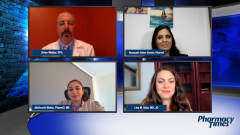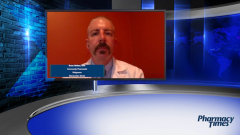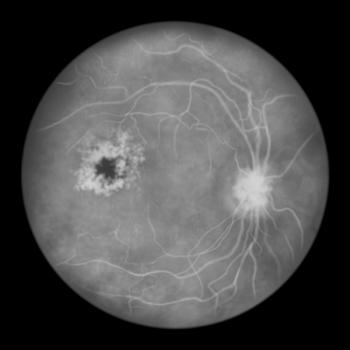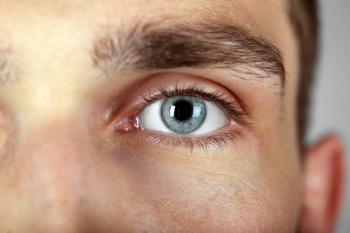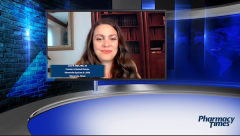
Getting to Know DED
Lisa M. Nijm, MD, JD, explains dry eye disease and its effects on a suffering patient.
Episodes in this series

Abhiruchi Mehta, PharmD, MS: Hello, and welcome to this Pharmacy Times® webcast on “Updates in the Treatment of Dry Eye.” My name is Dr Abhi Mehta, and I’m an outpatient pharmacist at Massachusetts General Hospital in Boston, Massachusetts. Joining me today in this virtual discussion are Lisa Nijm, MD, JD, founder and medical director of Warrenville Eye Care & LASIK in Warrenville, Illinois, and assistant clinical professor of ophthalmology at the University of Illinois Eye and Ear Infirmary, Department of Ophthalmology and Visual Sciences in Chicago. Then, we have Monazzah Akbar Sarwar, PharmD, assistant director of Taylor Street Eye and Ear Infirmary Pharmacy and clinical assistant professor at the University of Illinois College of Pharmacy in Chicago; and we have Brian Walker, RPh, a community pharmacist with Walgreens Pharmacy in Warrenville.
Often, dry eye treatment starts at the pharmacy, with patients coming in and seeking over-the-counter options before speaking to a physician. Today, we are going to discuss several topics related to dry eye, including over-the-counter and prescription treatment options and how to advise patients [on their proper use].
My first question is for Dr Nijm. How is dry eye disease defined? How common do you think it is, and who is likely to get it?
Lisa M. Nijm, MD, JD: Thanks for having me here. It’s a privilege to be here with this expert panel, talking about such a common disease for our patients.
Dry eye disease, in its simplest terms, is an imbalance in homeostasis—a disruption in homeostasis of the tear film—that usually occurs due to inflammation and causes an inflammatory cascade that results in the symptoms that our patients often experience from dry eye. It’s much more common than one would think. An estimated 16 million people in the United States have diagnosed dry eye disease, and another 16 million have underdiagnosed or undiagnosed dry eye disease, so about 32 million people in the United States experience dry eye.
Abhiruchi Mehta, PharmD, MS: That’s a big population. What are some of the common symptoms of dry eye disease?
Lisa M. Nijm, MD, JD: Some of the usual things that people think of are feelings of dryness, a foreign-body sensation, or a sandy, gritty feeling. There are a lot of other symptoms that we don’t necessarily think of that are dry eye–related or that cause dry eye. The most common one I hear is tearing. I have to explain it a lot to patients, because it doesn’t make sense. If they have dry eye, why are they having tearing? When the eye gets dry, it sends a signal to the brain to release more tears, but, unfortunately, those tears don’t have the same composition as normal tears and tend to run out of the eye.
Another common symptom that people don’t necessarily associate with dry eye is fluctuating vision. This is one of my secret questions. When I ask [if they are having changes in vision], I’m looking for the cause of their fluctuation in vision, especially if they tell me that they have blurred vision after they’ve been reading for a while. That’s usually dry eye because when we stare, we don’t blink as much naturally, and that causes the surface to get dry. There are other things [as well], like itching.
Abhiruchi Mehta, PharmD, MS: If you had to list some causes of dry eye disease, what would those be?
Lisa M. Nijm, MD, JD: There are a number of underlying autoimmune conditions that can cause dry eye disease. Sjögren syndrome or rheumatoid arthritis are [2] of the more common ones. Dry eye disease is also associated with allergies. Sometimes, we can’t figure out the cause. Sometimes, people have dryness, and, unfortunately, that’s the state of their eye. Contact lens wearers tend to have dry eyes. Patients often can develop dry eye after eye surgeries.
Abhiruchi Mehta, PharmD, MS: Since it’s so common, I’m sure it affects their lifestyle or quality of life. How do you think that plays into the disease?
Lisa M. Nijm, MD, JD: That’s a great question because that’s one thing that gets overlooked. There are significant data showing the negative impact of dry eye. If you look at severity scores when they ask patients how dry eye compares to other diseases, patients who have severe dry eye rate it as equivalent to having angina or kidney problems. They feel the impact of having a disease that affects them every day.
You asked about other associated diseases or other patients who commonly have [dry eye]. Glaucoma and dry eye are also very common, and that gets overlooked, too. The ability for patients to comply with other medications, such as taking their glaucoma drops, [falls] precipitously when [patients] have irritation and inflammation from dry eyes. We see the effect of that in the treatment of their glaucoma condition as well. It’s something that has a huge impact on their lifestyle, on people’s ability to function, and even on treatment of other eye diseases.
Transcript edited for clarity.
Newsletter
Stay informed on drug updates, treatment guidelines, and pharmacy practice trends—subscribe to Pharmacy Times for weekly clinical insights.

